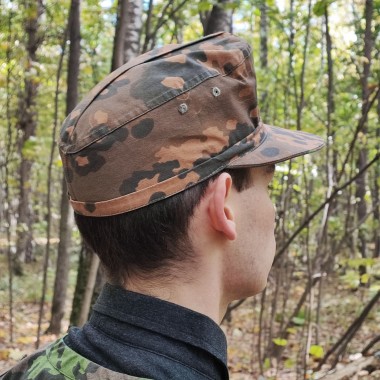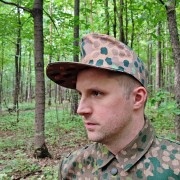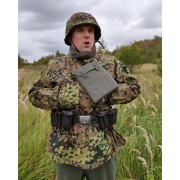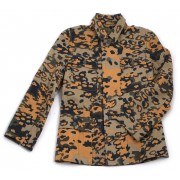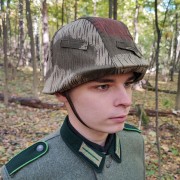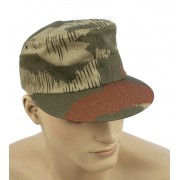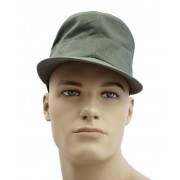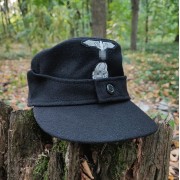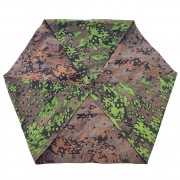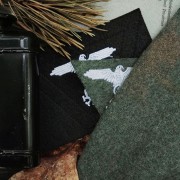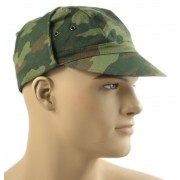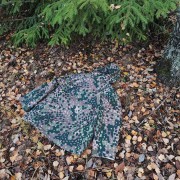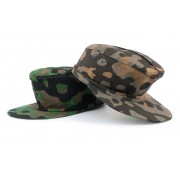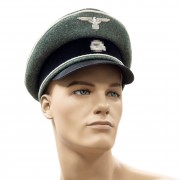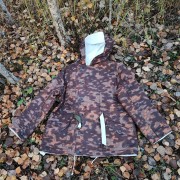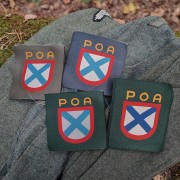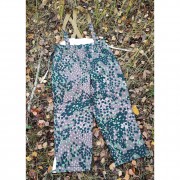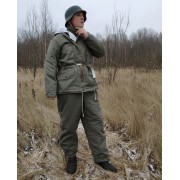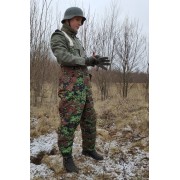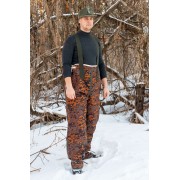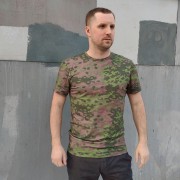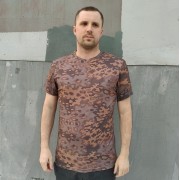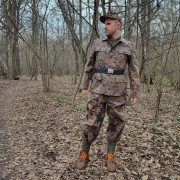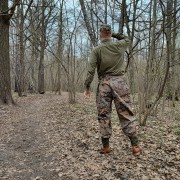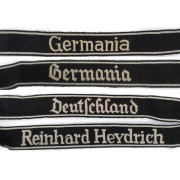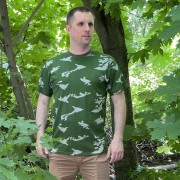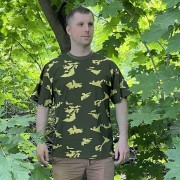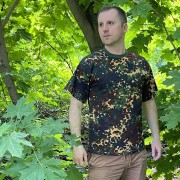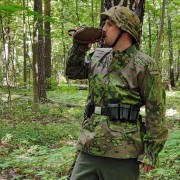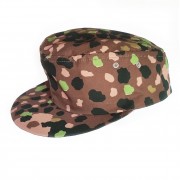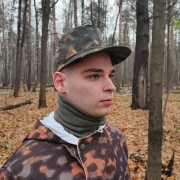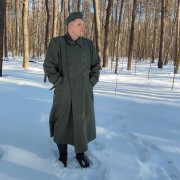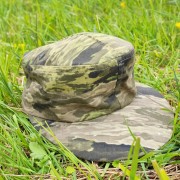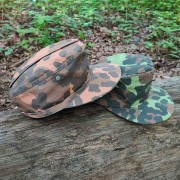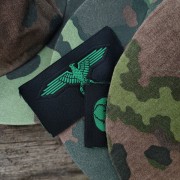How to choose the size?
Use a centimeter flexible tape to determine the size (i.e. head circumference above the ears in centimeters). How to measure correctly, please follow the link.
Description
The cap is made in Russia from material produced in Russia. The camouflage is a neat and complete copy of the "Oakleaf A" pattern, almost 1x0.5 meters in size, without repeating the pattern, so there cannot be two identical caps. Very high quality camouflage pattern with the correct form of spots.
The fabric is a copy of the German tent fabric (Zeltbahn) and corresponds to it in terms of texture and properties. Repels water due to the tight weave of the threads, just like the original fabric. Does not shine through in the sun. Like the original fabric, it is not waterproof: rain resistance is due to the swelling of the threads under the influence of moisture, which create a very dense surface.
The cap is double-sided, fully reversible: on one side, the camouflage is made in summer (green), on the other, in autumn (brown) tones.
On the "autumn" side there is a sweat band, it also closes the edge of the cap. All this is stitched together in a special way and in a certain sequence. On cheap copies, this tape is sewn around the entire perimeter, but on the original M42 (as well as on our copy), the seam running along the bottom edge of the cap does not go to the visor. Above the visor, the seam is laid separately from the inside. There are a number of other details (laying of gates, etc.) that can be seen in the photo and see how carefully the original is copied.
Price for 1 cap. Other items in the photo are not included in the price and are sold separately, they are shown in the photo to compare the color and size of the cap.
How to care?
The cap can be machine washed. However, machine washing may cause the cap to shrink. Therefore, it is best to wash the cap by hand: apply detergent to soiled areas, rub with a dishwashing sponge and rinse with water. Dry flat.
The insert in the visor is not afraid of water, does not break. It can be bent, giving it a shape, and straightened back. That is, the visor can be worn in the form of a "house" or "arc", as you like.
Historical reference.
A cap in "Oakleaf " camouflage has been used since 1942. In 1944, all SS caps were discontinued, but were used until the end of the war as a comfortable and beautiful headdress.
How to wear?
Usually the soldiers made a tuck on top of the front like on a hat (they received two holes on the sides of the central seam). This fashion came from the mountain rangers, who were the first to receive caps, and in general from the civilian fashion of that time. Also, the cap could be worn fully extended (before the first battle, probably).
The infantrymen wore a cap with a visor forward (tankers could wear it with a visor back, because the visor makes it difficult to crawl through the hatches).
These caps had no insignia by default. In a very short period at the beginning of 1943, woven badges (eagle and skull) in green and brown were issued, which were sewn on both sides of the cap, respectively. They are illustrated in the book by M. Beaver "Camouflage uniforms of the Waffen-SS". But the color signs did not last long and are very rare.
Sometimes they used a metal skull (from a cap) without an eagle or a standard SS woven skull (white on a black background).
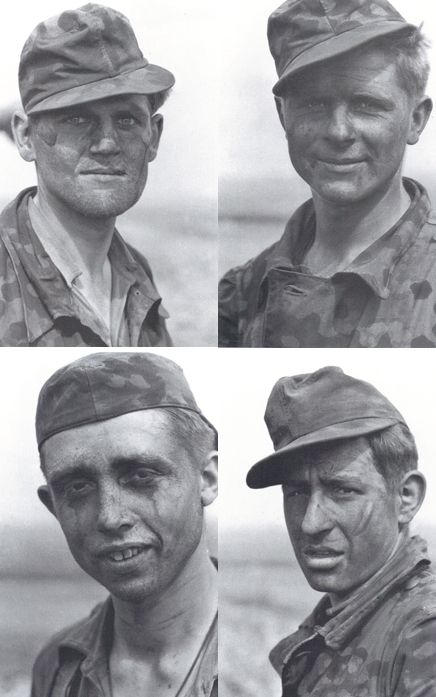
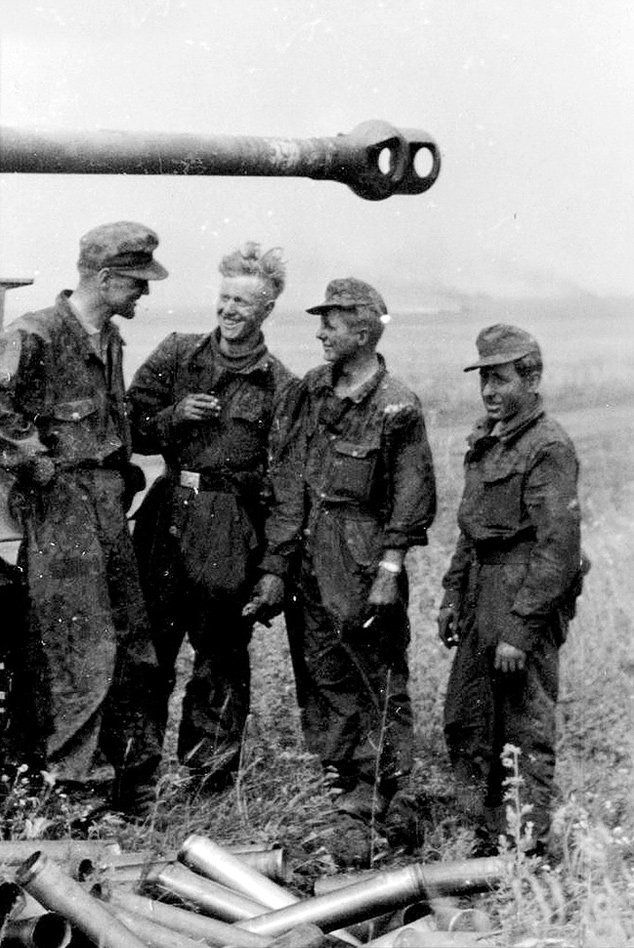
LSSAH tankers during the Battle of Kursk in the summer of 1943, all covered in dust and gunpowder. The entire selection is available in Remy Spezzano's book "Waffen-SS KURSK 1943" (RZM Publishing). Two of them clearly show that the caps have shaped dents in front. The visors are quite soft, but elastic, just like on our caps.










